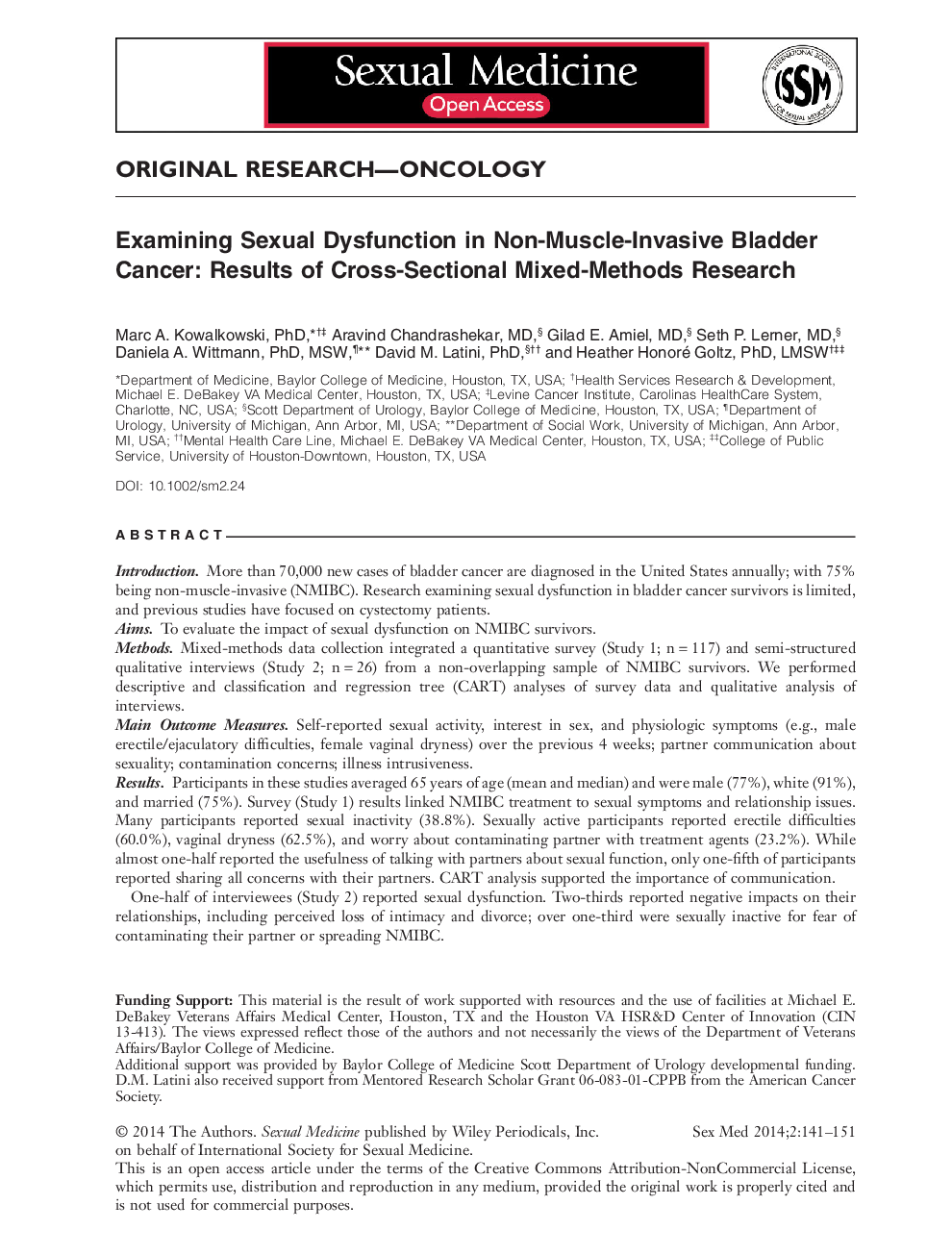| کد مقاله | کد نشریه | سال انتشار | مقاله انگلیسی | نسخه تمام متن |
|---|---|---|---|---|
| 4274574 | 1285272 | 2014 | 11 صفحه PDF | دانلود رایگان |

IntroductionMore than 70,000 new cases of bladder cancer are diagnosed in the United States annually; with 75% being non‐muscle‐invasive (NMIBC). Research examining sexual dysfunction in bladder cancer survivors is limited, and previous studies have focused on cystectomy patients.AimsTo evaluate the impact of sexual dysfunction on NMIBC survivors.MethodsMixed‐methods data collection integrated a quantitative survey (Study 1; n = 117) and semi‐structured qualitative interviews (Study 2; n = 26) from a non‐overlapping sample of NMIBC survivors. We performed descriptive and classification and regression tree (CART) analyses of survey data and qualitative analysis of interviews.Main Outcome MeasuresSelf‐reported sexual activity, interest in sex, and physiologic symptoms (e.g., male erectile/ejaculatory difficulties, female vaginal dryness) over the previous 4 weeks; partner communication about sexuality; contamination concerns; illness intrusiveness.ResultsParticipants in these studies averaged 65 years of age (mean and median) and were male (77%), white (91%), and married (75%). Survey (Study 1) results linked NMIBC treatment to sexual symptoms and relationship issues. Many participants reported sexual inactivity (38.8%). Sexually active participants reported erectile difficulties (60.0%), vaginal dryness (62.5%), and worry about contaminating partner with treatment agents (23.2%). While almost one‐half reported the usefulness of talking with partners about sexual function, only one‐fifth of participants reported sharing all concerns with their partners. CART analysis supported the importance of communication.One‐half of interviewees (Study 2) reported sexual dysfunction. Two‐thirds reported negative impacts on their relationships, including perceived loss of intimacy and divorce; over one‐third were sexually inactive for fear of contaminating their partner or spreading NMIBC.ConclusionsSurvivors' sexual symptoms may result from NMIBC, comorbidities, or both. These results inform literature and practice by raising awareness about the frequency of symptoms and the impact on NMIBC survivors' intimate relationships. Further work is needed to design symptom management education programs to dispel misinformation about contamination post‐treatment and improve quality of life. Kowalkowski MA, Chandrashekar A, Amiel GE, Lerner SP, Wittmann DA, Latini DM, and Goltz HH. Examining sexual dysfunction in non‐muscle‐invasive bladder cancer: Results of cross‐sectional mixed‐methods research. Sex Med 2014;2:141–151.
Journal: Sexual Medicine - Volume 2, Issue 3, August 2014, Pages 141–151